
In the last century, on 18 Jun 1999, the Today in Science History website was only a few days old. The first page written was on 3 Jun 1999. It took days to research and compile the information back then. The next major effort was the 18 Jun page. Still today, it has the most subsidiary pages written for more information on each of the scientists born on this day. Accomplishing that was the work of several days, which made such intense effort impractical when there were 366 basic calendar pages to write. So when you look at today's web page for 18 Jun — please click each of the “Read More” icons and visit part of this site's own history.
To highlight one of today's pages, let’s pick Alexander Wetmore, born 18 Jun 1886. Unless you are an ornithologist, you may never have seen his name before. Our biography of Alexander Wetmore page includes a small photo of this scientist at age 16 - at his desk holding a bird. Like so many other scientists, he exemplifies how the lifelong passion was firmly implanted in youth.
Wetmore went on to become a bird taxidermist for the Denver Museum of Natural History, and by 1925 had joined the Smithsonian Institution. Twenty years later, he became the Smithsonian’s sixth Secretary. But there is so much more that he contributed in his long career in his field, which you can sample by reading the web page. Enjoy!

On 18 Jun 1886, Alexander Wetmore was born, an American ornithologist who in 1925 joined the Smithsonian’s U.S. National Museum. From 1945 he served seven years as the Secretary of the Smithsonian Institution, and then continued research there for another 25 years. [Today's book pick is: Song and Garden Birds of North America, by Alexander Wetmore] and published by National Geographic Society. In this 400-page reference guide, over 327 species are portrayed in color and fully described, with secrets of their lives, courting rituals and battle for territory. To name just a few, it covers owls, woodpeckers, fly catchers, crows, jays, orioles, creepers, thrushes, swallows, tanagers, wrens, warblers, hummingbirds, finches and sparrows.
It is available from Amazon, typically about Used from $0.75. (As of earlier time of writing - subject to change.)
 | My interest in science was excited at age nine by an article on astronomy in National Geographic; the author was Donald Menzel of the Harvard Observatory. For the next few years, I regularly made star maps and snuck out at night to make observations from a locust tree in our back yard. |
 | It was my science that drove me to the conclusion that the world is much more complicated than can be explained by science. It is only through the supernatural that I can understand the mystery of existence. |
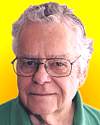 | The word “dis-aster,” in fact, means “bad star.” |
| Before you look at today's web page, see if you can answer some of these questions about the events that happened on this day. Some of the names are very familiar. Others will likely stump you. Tickle your curiosity with these questions, then check your answers on today's web page. | |
| Births | |
 | Allan Rex Sandage, born 18 Jun 1926, is a American astronomer who (with Thomas A. Matthews) discovered (1960), the first optical identification of a quasi-stellar radio source, a starlike object that is a strong emitter of radio waves. Although a strange source of radio emission, in visible light, it looked like a faint star. Yet this object was emitting more intense radio waves and ultraviolet radiation than a typical star. What name was given to such a “quasi-stellar radio source”? |
 | On 18 Jun 1845, a French scientist was born who was a physician, pathologist, and parasitologist. As a French military surgeon in Algeria, he discovered the parasite that causes human malaria in the red blood cells. He founded the medical field of protozoology, doing important work on other protozoal diseases, including sleeping-sickness and kala-azar. For this he received the 1907 Nobel Prize for medicine. Can you name this man? |
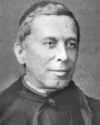 | Pietro Angelo Secchi, born 18 Jun 1818, was an Italian Jesuit priest and astrophysicist, who made the first survey of the spectra of over 4000 stars and suggested that stars be classified according to their spectral type. He studied the planets, especially Jupiter, which he discovered was composed of gasses. Secchi also studied the dark lines which join the two hemispheres of Mars. What did Secchi call the dark lines on Mars? |
| Deaths | |
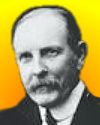 | Arthur Edwin Kennelly (1861-1939) was an Irish-American electrical engineer who was a prominent contributor to the science of electrical engineering. For six years he worked for Thomas Edison at West Orange Laboratory, then branched out as a consultant. Upon his co-discovery of the radio reflecting properties of part of the upper atmosphere, the stratum was called the Kennelly-Heaviside layer. In which atmospheric layer is this found? |
| Events | |
 | On 18 Jun 1993, the first lab test was released confirming a small dog in Tucson, Arizona, had been killed by a swarm of non-native bees. The media dubbed them “killer bees.” Arizona was the second state to be invaded, after the species spread into Texas from Mexico. Since the 50s, the bees had extended their range northward. They spread up through Central America, from Brazil, where they resulted from cross-breeding honey bees with imported bees for experimental work. From which country were the experimental bees originally imported into Brazil? (That country is part of the alternate familiar name for killer bees.) |
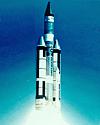 | On 18 Jun 1965, the first large solid-fuel rocket - a Titan 3C - rocket was launched into orbit. Many military and NASA payloads have been put into orbit with the generations of this launch vehicle family. What are some of the benefits of solid-fuel over liquid-propellant rockets? |
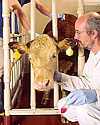 | On 18 Jun of a certain year, the first genetically engineered vaccine was announced. It was designed to prevent hoof and mouth disease. In what decade did this happen? |
Fast answers for the previous newsletter for June 17: Wheaties • John Robert Gregg • the enzyme action involved • Amelia Earhart • the decade including the year 1950 • PanAm.
 If you enjoy this newsletter, the website, or wish to offer encouragement or ideas, please send feedback by using your mail reader Reply button.
If you enjoy this newsletter, the website, or wish to offer encouragement or ideas, please send feedback by using your mail reader Reply button. Your click on a Facebook, StumbleUpon, or other social button on the site webpages is also a welcome sign of appreciation. Thank you for using them.
© This newsletter is copyright 2020 by todayinsci.com. Please respect the Webmaster's wishes and do not put copies online of the Newsletter — or any Today in Science History webpage. (If you already have done so, please remove them. Thank you.) Offline use in education is encouraged such as a printout on a bulletin board, or projected for classroom viewing. Online, descriptive links to our pages are welcomed, as these will provide a reader with the most recent revisions, additions and/or corrections of a webpage. For any other copyright questions, please contact the Webmaster by using your mail reader Reply button.
--
If you do not want to receive any more newsletters, Unsubscribe
To update your preferences and to unsubscribe visit this link
Executive Real Estate Business Class
-
"It was like a man with wings. It wasn't like anything you'd see on TV or in a monster movie." ...
About the publisher
Search This Blog
Blog Archive
-
▼
2020
(1542)
-
▼
June
(193)
- TRAVEL: Epic America—Our photographers' picks
- On This Day for June 30 - Night of the Long Knives...
- Newsletter for Tuesday 30 June.
- We told you: Mass-Tracking COVI-PASS Immunity Pass...
- June 30: Theory of Evolution, the Night of Long Kn...
- HISTORY: And the symbols come tumbling down
- Explore the Ocean with Nat Geo Kids Magazine
- New This Week on History News Network
- On This Day for June 29 - London's Globe Theatre d...
- Newsletter for Monday 29 June.
- COVID Cartoon Night (not funny) while we weep for ...
- June 29: Shakespeare's Globe Theatre Burns Down an...
- FAMILY: Getting your kid to help others
- Henry VIII's surprising burial place | The world's...
- On This Day for June 28 - Assassination of Archduk...
- Say the wrong thing: lose visitation with your kid...
- Newsletter for Sunday 28 June.
- June 28: Franz Ferdinand Assassinated, the Treaty ...
- The Compass: Kenya
- How the Invention of A/C Changed US Politics
- On This Day for June 27 - Yen made official moneta...
- Newsletter for Saturday 27 June.
- June 27: 1st Women's Magazine, Nuclear Power Stati...
- CORONAVIRUS SPECIAL EDITION: The virus hasn't won ...
- PHOTOGRAPHY: A legendary photographer's enduring r...
- Partner: How to keep your kids learning vocab this...
- Archaeologists Say They've Just Solved The 400-Yea...
- The Roundup Top Ten From History News Network
- On This Day for June 26 - Opening of CN Tower, Bab...
- Newsletter for Friday 26 June.
- Contact Tracer warns of forced vaccinations plus R...
- June 26: Reconnaissance balloons, Kennedy's Clario...
- YOUR WEEKLY ESCAPE: A dangerous quest for hallucin...
- That Was No Bunny: Watch New Episode of Alone Tonight
- ANIMALS: Leave that elephant alone
- On This Day for June 25 - Korean War begun, Antoni...
- Newsletter for Thursday 25 June.
- June 25: 1st Female PhD, Custer's Last Stand, the ...
- SCIENCE: The heat wave in the Arctic
- Demystified: What Does "SPF" Mean?
- On This Day for June 24 - Russia invaded by Napole...
- Breaking News from History News Network
- Newsletter for Wednesday 24 June.
- June 24: Fatal Medieval Dance Manias, the Gadsden ...
- TRAVEL: Fear of flying and hotel rooms fuels RV boom
- Be at the Front Lines of History's Most Epic Battl...
- On This Day for June 23 - Battle of Bannockburn, C...
- Lowest US coronavirus deaths reported since March ...
- Newsletter for Tuesday 23 June.
- June 23: World's Oldest Parliament, the Contracept...
- Life Under The Shah: What Iran Looked Like Before ...
- HISTORY: A swift goodbye to some racist imagery (a...
- A whole year of Britannica Premium for $49.99?
- New This Week on History News Network
- On This Day for June 22 - Mutiny against Henry Hud...
- Newsletter for Monday 22 June.
- Clintons and Gates Connected at the Hip plus Cardi...
- June 22: Galileo Galilei Recants, Last Shot of the...
- FAMILY: How to keep kids safe as places reopen
- On This Day for June 21 - Japanese defenses destro...
- Newsletter for Sunday 21 June.
- June 21: 1st Governor General of India, Fermat's L...
- The Compass: Ecuador
- On This Day for June 20 - Casket Letters found, Ho...
- Newsletter for Saturday 20 June.
- CORONAVIRUS SPECIAL EDITION: Could public bathroom...
- Mandatory Vaccines coming: Bill Gates Accuses Tho...
- June 20: Attila the Hun, the University of Oxford ...
- PHOTOGRAPHY: Fatherhood 2020 — ‘Fear and courage a...
- Why is America haunted by its past?
- The Woman Who Claimed Emmett Till Wolf-Whistled At...
- This Week's Roundup Top Ten from History News Network
- Exclusive HistoryExtra podcasts | Listen now
- On This Day for June 19 - Rosenbergs executed for ...
- Newsletter for Friday 19 June.
- World Economic Forum starts The Great Reset initia...
- YOUR WEEKLY ESCAPE: How the ultimate shark photo w...
- June 19: London's Metropolitan Police and the 1st ...
- Predator Encounters. Watch New Episode of Alone To...
- ANIMALS: Finding the snow leopards
- Count on a Source You Can Trust
- On This Day for June 18 - War of 1812 begun, Sir P...
- Newsletter for Thursday 18 June.
- Lockdowns, tracing, testing, vaccinating, and Libe...
- June 18: US-British War of 1812, the Battle of Wat...
- SCIENCE: They grew fearsome. They began soft, and ...
- Demystified: How Are Sports Chosen for the Olympics?
- Breaking News from History News Network
- On This Day for June 17 - Arrest of O.J. Simpson, ...
- Newsletter for Wednesday 17 June.
- June 17: Mumtaz Mahal, the French Revolution and G...
- TRAVEL: They hurtled the world's highest point
- Explore together with Nat Geo Kids magazine
- On This Day for June 16 - First woman in space, Jo...
- Newsletter for Tuesday 16 June.
- June 16: Salvation Army Forms, Bloomsday and FDR's...
- HISTORY: Why we can’t shake COVID-19
- New This Week on History News Network
- On This Day for June 15 - Magna Carta sealed by Ki...
- Yes, they really are forcing changes to your world...
-
▼
June
(193)
-
Blogroll
-
About
HistoryFact










0 comments:
Post a Comment